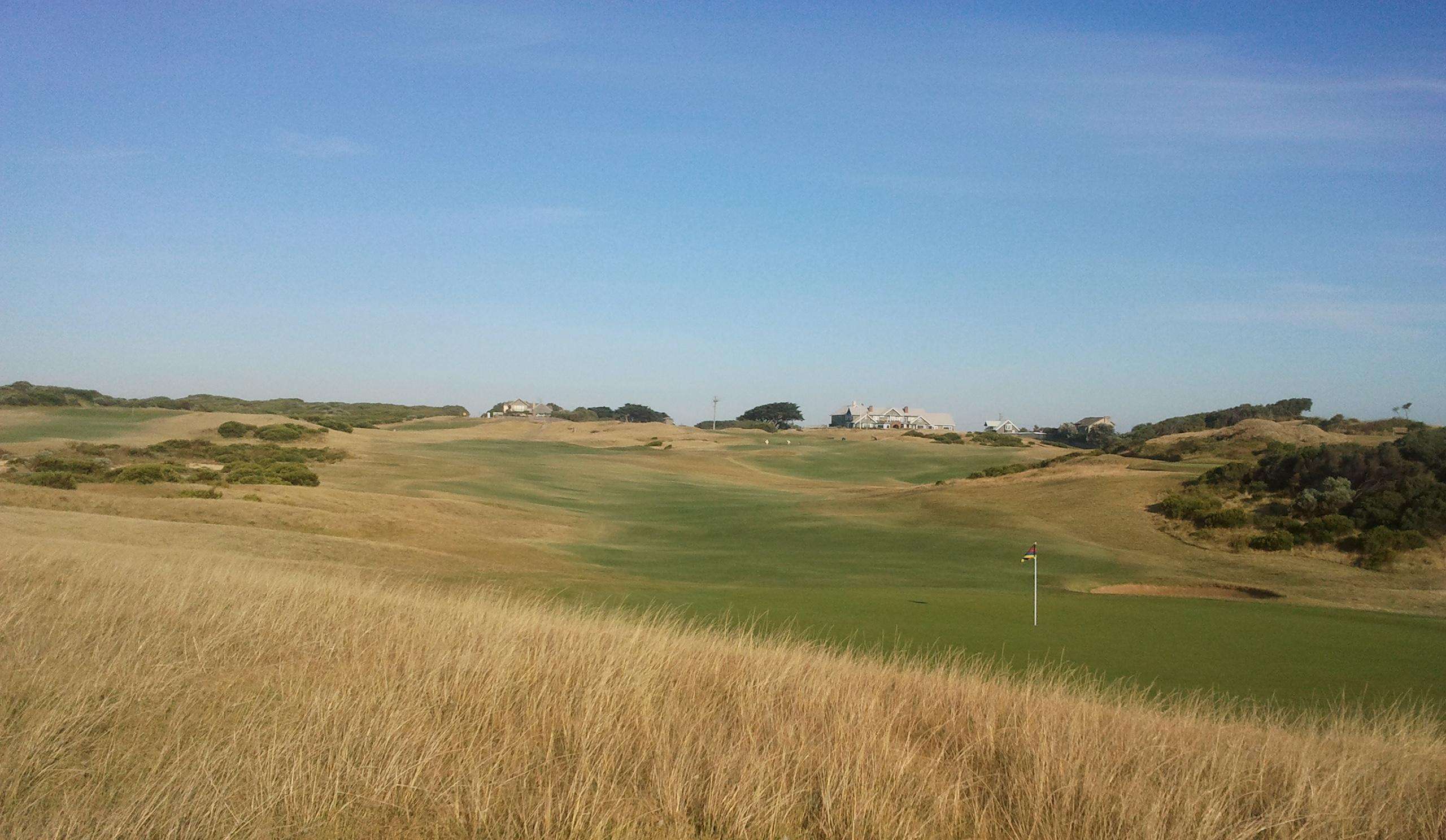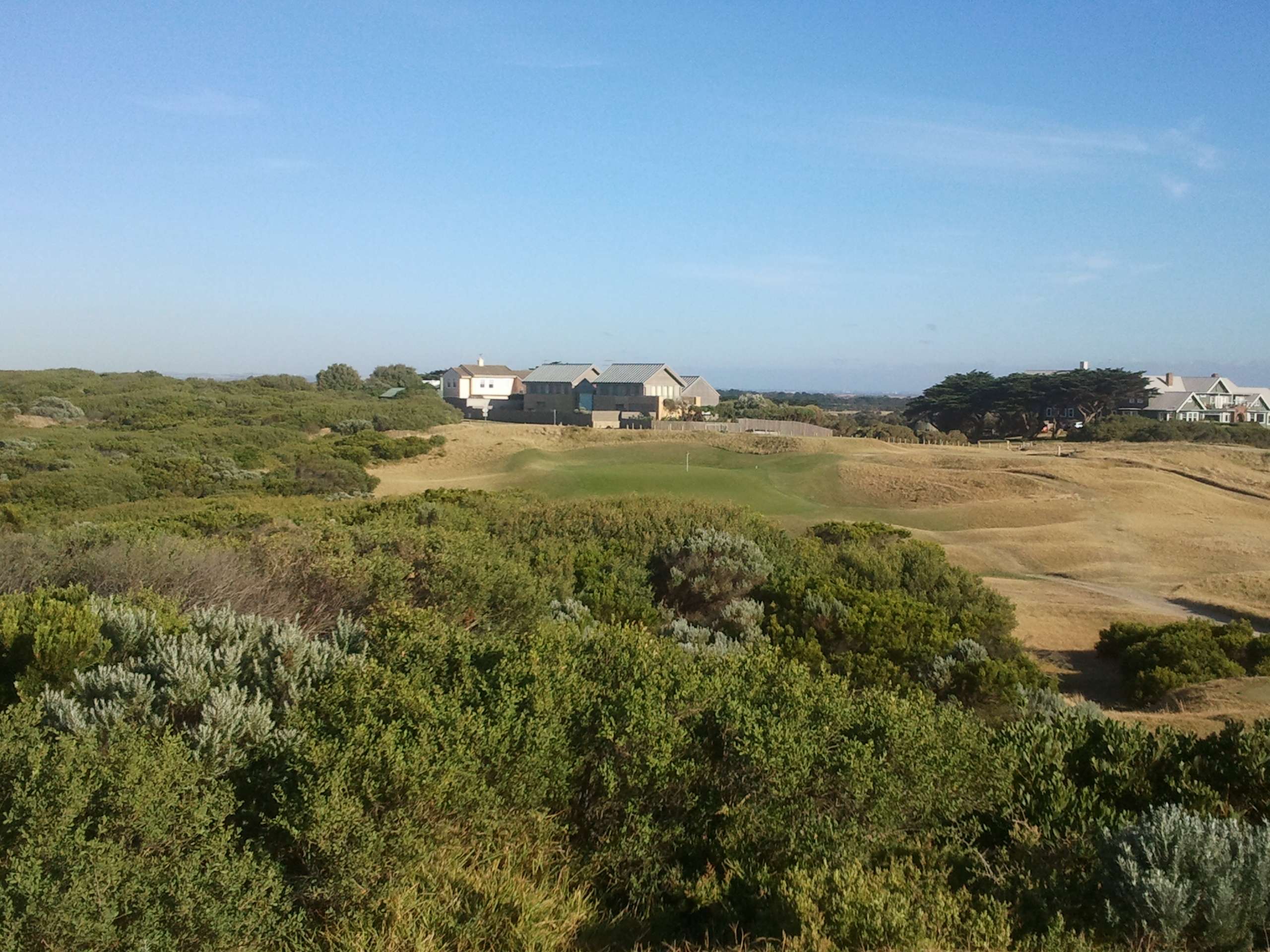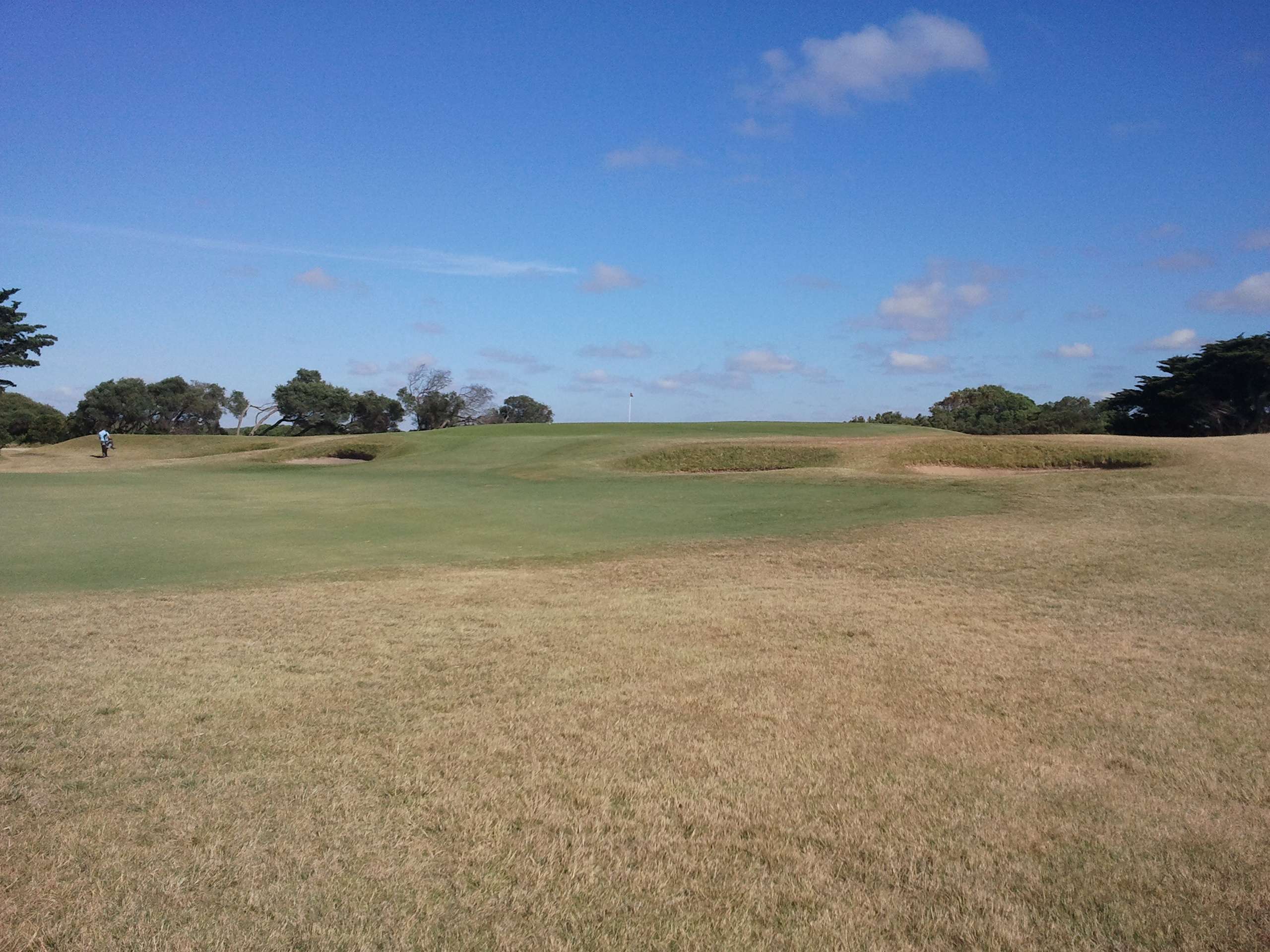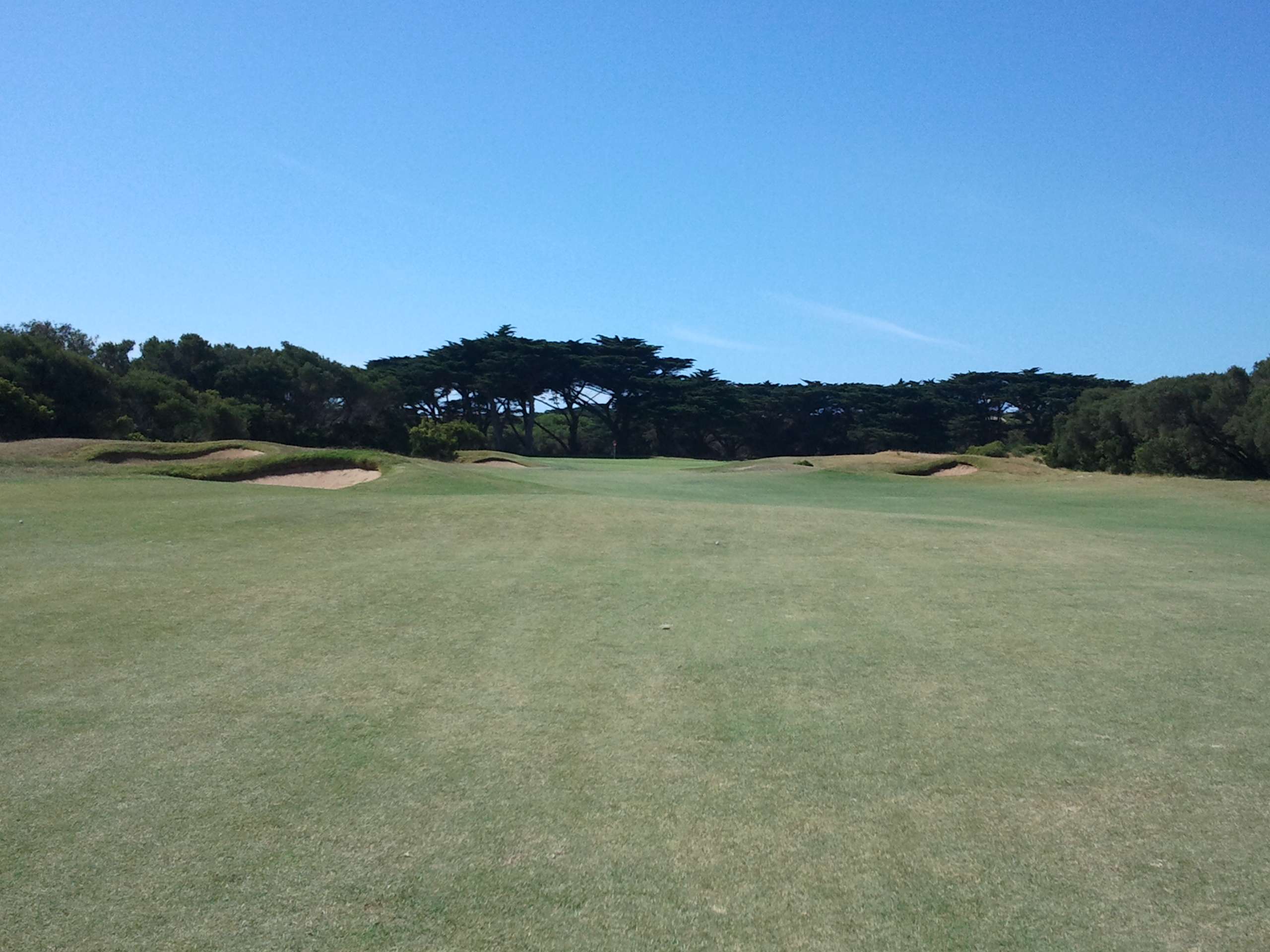
Barwon Heads comes charging out of the gate like few other courses, the 1st hole featuring wild fairway contours and a wonderful green that uses a false front in perhaps the most effective way, set above the golfer's head as he approaches and paired with a skyline greensite -- the fear of going long meaning many will stand disappointed in the fairway and watch their ball roll back towards them.
At just a touch over 300 metres, the hole encapsulates why the course length of 5500 metres is in no way representative of what you're in for.
A natural hardpan area is well used at the dogleg right 3rd - setting up a tempting diagonal drive before the fairway climbs to a high green, while the 4th is a par three reminiscent of Rye in its character and bold greensite (below).

The 6th is the final hole on the eastern paddock, another short par four over large undulations that is perhaps one of the best two or three holes on the course, the green well-defended at its flanks and set at an angle to favour the hard-to-hold higher right-hand-side.
As you cross the road, the most consistent and stirring stretch of golf is behind you, and though there are several undeniable highlights to come, the joy of Barwon Heads is never greater than in that first third of the course.
The 8th's valley setting and broken ground make for a wonderful par three where hidden land short of the green means it looks more imposing from the tee than is the reality, but it is bookended by two weaker mid-length par fours with somewhat forced lay-up drives and uninspiring greens.
The raised 11th green is quite different from what has come before, but extremely demanding in its domed shape. The green is the first major break in the course's character and is followed in that vein by the likes of the 14th, 16th green and par three 17th -- all of which detract from the whole, in both quality and cohesion. 11th green below.

But the final third is then lifted by the delicate drop-shot wedge that is the 13th, a smartly-bunkered par four over flat ground at the 15th (below) and the lion's share of the 16th until the new green. The 18th isn't a magical hole to rival the course's best, but the green has some interest around it and the land and setting are both good, making it a worthy close, finishing by the beautiful near-century-old clubhouse.

There's a joy to be found at Barwon Heads that is driven by the low-key links architecture where the land is king, the greens a great example of simple slopes that aren't busy to the eye, but that are fascinating to play.
In significant amounts Barwon Heads reminds me of both Rye in southern England and, across the English Channel near Boulogne, Le Touquet's La Mer course. The land is undeniably linksy and ranges from bold to extremely subtle, and the large frontal ridge that separates the course from the coast is also a common feature. The larger vegetation than is found on most links is another feature that unites Barwon Heads and Le Touquet.
While it's probably a very personal thing to me only, it was a real joy as I made my way around Barwon Heads to be reminded of both those courses almost 20,000km away, where I have spent a few of the most special and memorable golfing days of my life.